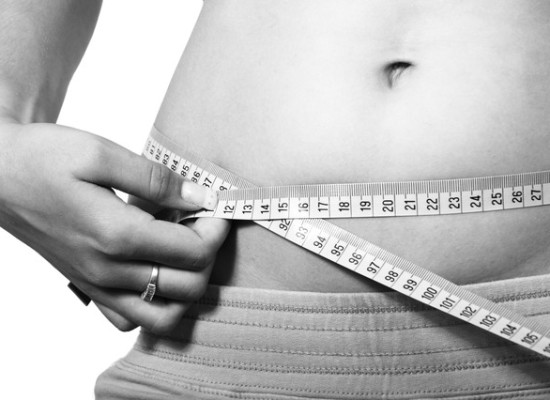
Coach Monica’s 11 Tips for Eating Healthy on a Budget
One of my most important duties as a coach is to break down the excuses that people use as barriers to living a healthier lifestyle. One barrier I see pretty often is people getting stuck thinking that eating healthy is too expensive. If this sounds like you, I’m here to UNstick you with my favorite tips for eating healthy on a budget.
You can NOT put a price on good health. The crappy foods that are constantly waved in front of our mouths may be easier and save us some money now, but they cause major health problems that will have us paying dearly later—to doctors, labs, and hospitals.
Once you get into the groove of healthier habits, they become second nature—you just have to be thoughtful and patient.
 You’ll waste a lot of food if it’s hidden behind other stuff in the back of the fridge or in the back of your pantry. Label your food containers and keep your foods organized!
You’ll waste a lot of food if it’s hidden behind other stuff in the back of the fridge or in the back of your pantry. Label your food containers and keep your foods organized!
If you’re a food freezer, make sure everything is labeled there as well AND be sure and check there when you’re planning your meals and before you go grocery shopping.
I organize my fridge according to the 21 Day Fix containers, which saves me MUCH time and effort during the week.
And, remember—if you only have healthy food in the house, you WILL eat healthier!
![]() Planning and prepping your meals for the week may very well be the most important tip for eating healthy on a budget.
Planning and prepping your meals for the week may very well be the most important tip for eating healthy on a budget.
This important process will reduce your trips to the grocery store, cut way back on food waste, and stop you from impulsive purchases that add to your grocery bill.
Here are some tips about this tip:
- Write down your meals AND snacks for the week—if you’re doing the 21 Day Fix, my Daily Meal Planner will help you recycle meals so you’re not reinventing the entire menu every week.
- Plan meals that use ingredients that are already in your fridge and pantry AND that are on sale at your local store (check the store’s website or app).
- Avoid planning complex meals that use expensive ingredients, instead focusing on simple meals that use single ingredient whole foods. BETTER YET—do buffet style meal prep with ingredients that mix and match making it easy and inexpensive to make a variety of simple meals.
- Plan on repeating some meals a few times—make your health and your budget a higher priority than your concern about being bored eating the same foods.
- Make a grocery list that ONLY includes the items you need to make the snacks and meals for the week—and stick to it.
- Don’t shop when you’re hungry! If you’re hungry, you’re much more likely to make impulsive (and expensive) purchases. I like to shop after I’ve had my Shakeology, which nixes my sweet tooth and keeps my belly full for at least a few hours.
- Plan to make extra so you have leftovers to save time and money. Leftovers are perfect for lunches or you can freeze them to eat later. You can also re-purpose them and use them in soups, stir fries, salads, wraps, etc.
- Stay away from the pre-prepped foods. A block of cheese costs less per serving than a bag of shredded cheese!
Many single ingredient whole foods are much less expensive per serving than processed foods, especially when you buy them in bulk. They are also a cost effective way to bulk up a meal, especially when you find them on sale.
Here are some examples:
- Brown rice—at about $0.18 per serving, this is an excellent staple to have on hand for salads, stir fries, and soups.
- Whole wheat pasta—another affordable staple at approximately $0.24 per serving.
- Beans—black, chickpeas, lentils, etc., are one of the least expensive healthy foods you can buy. Add them to stir fries, soups, salads, or your homemade hummus.
- Old fashioned oats—costs only about $0.13 per serving and give you fiber and protein.
- Barley
- Eggs—a simple and nutritionally dense source of protein. Hard boil them to make them last a bit longer.
- Whole chickens and turkey (use the bones to make your own broth!)
- Affordable veggies (cabbage, squash and sweet potatoes are pretty cheap all year round)
- Canned tuna—a can of albacore tuna with 28g of protein can cost as little as $0.70 per serving on sale and is an excellent high protein addition to salads or with whole wheat crackers. Just make sure you limit how much you eat each week and know your tuna so you’re not actually harming your health!
- Quinoa—because this is high in protein, quinoa makes an excellent replacement for meat.
- Greek yogurt—buying a large container can get your cost per serving down to about $0.89 (even less when you get it on sale).
- Sweet potatoes—much healthier and lower glycemic than regular potatoes. You can cook these ahead of time and freeze them in single servings.
- Cottage cheese
- Nuts & nut butters—an excellent source of protein and fat. Just make sure you store these in the freezer if you buy a bunch.
- Watermelon—much more nutritious than you think and NOT expensive!
- Bananas—super cheap, full of potassium, and easy to add to a variety of dishes. Their downfall is their quick spoilage, which is why I freeze them and close my eyes when I eat them thawed.
Make sure you store them so they don’t spoil—either in airtight containers or in the fridge. I usually cook up a big batch of these foods and freeze them in single portions to add them to soups and salads when I need them.
Another tip for eating healthy on a budget is to buy fresh produce when it’s IN season and freeze it to eat later.
Produce that is not in season is usually shipped from somewhere far away, which adds significantly to its cost. Local in season produce is not only cheaper, but more flavorful and at peak nutrition.
By freezing it, you are saving money by buying the less expensive bulk bags and eliminating waste!
Flash frozen fruits and vegetables are usually just as nutritious as fresh and can cost as little as $0.25 per serving when on sale.
Make sure you take a quick peek at the ingredients to make sure they are not sneaking in anything unhealthy!
Frozen produce is great to have on hand to add just the amount you need to your week’s meals, regular or Shakeology smoothies, or as toppings for oatmeal, yogurt, or healthy pancakes.
 Eating less meat can save you money without having a negative impact on your healthy diet.
Eating less meat can save you money without having a negative impact on your healthy diet.
Replacing meat with other sources of protein—like eggs, canned tuna, beans, etc.—that cost less, are just as nutritious, and last longer before spoiling can save you a lot.
These tried and true grocery shopping strategies will definitely help you start eating healthy on a budget:
- Stick with your grocery list! Don’t get sidetracked at the grocery store and add to your bill by buying things impulsively.
- Stay on the perimeter of the store as much as possible. Generally, this is where you will find the healthier whole foods. Stores usually put the most processed and unhealthy foods in the middle aisles.
- Shop the top and bottom shelves—the most expensive items are usually put at eye level.
- Check the ethnic sections—sometimes you will find some excellent deals there.
- Buy the generic brand of whole foods.
- When a (healthy) staple item is on sale, stock up on it! Just make sure you note the expiration date, so you’re not ultimately wasting it.
- Don’t buy drinks (like soda, juice, etc.). Not only will this save you money, but is a big step in improving your health. Drink water (remember that it doesn’t have to be boring—infuse it with your fruit peels, veggie clippings, and home grown herbs) or make a big pitcher of iced herbal tea.
Even when you eat at inexpensive places, eating out adds up to be very expensive. You can typically feed a family of four for the same price as a restaurant tab for two.
I find the more I meal prep on the weekends, the easier it is to not go out during the week. And, by packing my lunch, snacks, and drinks for when I’m out and about, I save a wad.
You can grow your own produce even if you live in a city (like me)! My urban garden makes me happy on SO many levels.
Not only does it save a bunch of money, but it tastes better because you can pick it at the exact right time—and it’s totally fun and fulfilling to grow your own food!
Remember, that you don’t always have to buy seeds—I’ve grown small crops just using the seeds from the produce I bought from the store or grew myself!
Another way to start eating healthy on a budget is to start shopping at affordable places. My favorites are Trader Joes and Costco. (I’ve never tried it, but I’ve been hearing a lot about Thrive Market, an online retailer who sells healthy and unprocessed foods for less and delivers them right to your doorstep, so it’s definitely worth checking out.)
It’s also worth checking out your local farmer’s market. I have found them to be pricey in San Diego, but that may not be the case in your area. Here are some resources to find them in your area—LocalHarvest.org, EatWellGuide.org, and EatWild.com.
You might even consider joining a co-op to save money on non-perishables.
I am a BIG proponent of buying organic—but, not if it makes little difference to my health. To help you with eating healthy on a budget, according to Mark Sisson, it’s okay to buy the NON-organic versions of the following foods:
- Coconut
- Onions
- Avocado
- Honey
- Asparagus
- Sweet potato
Parting Words about Eating Healthy on a Budget
You might be wondering why I didn’t mention coupons. There’s a reason. Coupons are almost entirely geared to unhealthy, processed foods. They are helpful to use on cleaning supplies and such, but I don’t find them very helpful for food items.
I’m hoping that these tips for eating healthy on a budget have helped blast the “too expensive” excuse by showing you that you do NOT have to break your bank account to eat well.
Remember—by eating healthy NOW, you are saving a lot of money in future medical costs, prescriptions, and lost work. Trust me, EATING HEALTHY IS WORTH THE INVESTMENT.
I’m ALL about deals, which is just one of the reasons I love Beachbody so much. They give me the opportunity to offer my customers FREE coaching. Click below to learn more:



